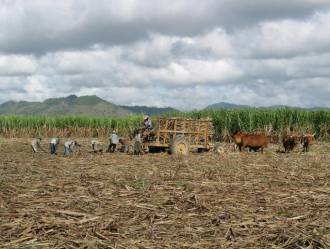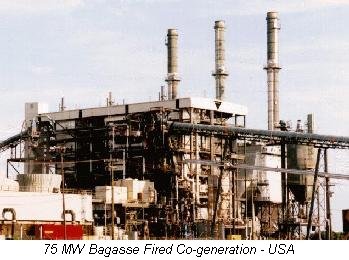

 |
 |
 |
|
|
||
 |
||
|
Atlantis was very much a natural environment. The Atlantean's harnessed the natural environment in a sustainable and renewable way. The Atlantean's created very little, if anything, artificially. The Atlantean's did not have plastics and the like, and the Atlantean's had no artificial alternatives for natural products such as fabrics. Atlantean homes, and public buildings were mostly carved into rock which was then highly polished using air blown sand. One of the key components of Atlantean furniture, fittings and even vehicles was processed Sugar Cane Fibre. The Sugar cane Fibre was heat treated and bound together using sand and one other substance to create a strong, lightweight and moldable material. Similar in principle to our carbon fibre products. |
||
 |
||
What Is Sugar Cane? |
||
| Sugar cane is a member of the grass family. Sugar
cane has its 'modern' origins in Papua New Guinea, and is now grown in tropical
regions throughout the world.
Sugar cane requires strong sunlight and abundant water for satisfactory growth. Sugar Cane farmers, usually cultivate hybrids of several species, and some varieties can grow up to five metres tall. Sugar Cane looks rather like bamboo cane, and it is within the cane that the sucrose is stored. In the right climate Sugar Cane will grow in 12 months and, when cut, Sugar Cane will re-grow in another 12 months, provided the roots are undisturbed. |
||
|
Sugar is made by some plants to store the energy which they do not need straight away, rather like the way in which animals make and store fat. The process whereby plants make sugars is photosynthesis. The plant takes in carbon dioxide from the air though pores in its leaves and absorbs water through its roots. These are combined to make sugar using energy from the sun and with the help of a substance called chlorophyll. Chlorophyll is green which allows it to absorb the sun's energy more readily and which, gives the plants' leaves their green colour. Oxygen is given off during the process of photosynthesis. |
||
 |
It takes between 12 months and 2 years to plant and harvest a Sugar Cane crop and some types of Sugar Cane can grow nearly as tall as a house, but this delicious food is best known as the white grains found in a bowl on nearly every dining table in the world and used to sweeten nearly everything that we eat. | |
Sugar |
||
| Historically, sugar was only produced
from Sugar Cane in relatively small quantities, which resulted in sugar
being considered a great luxury, particularly in Europe where Sugar Cane
could not be grown. It is not easy to ship food quality sugar across the
world, so a high proportion of cane sugar is made in two stages.
Raw sugar is made where the sugar cane grows, and white sugar is made from the raw sugar in most countries. Beet sugar is easier to purify, and is grown where it is needed so white sugar is made in one stage. The initial stage of processing sugar cane involves sampling, weighing and washing the sugarcane, which is then crushed and milled. Juice obtained from the mill is heated, clarified and filtered in a process which separates the sucrose. After evaporation concentrated cane syrup remains, and a crystallization takes place, and the sugar is separated from the syrup. |
||
Panela |
||
|
The result of the milling process is pure whole unrefined non-centrifugal cane sugar, called Panela (right). The earliest modern record of Panela is around 3000BC in India, where Panela was known as Gur Jaggery, or more commonly today Gur, or 'poor peoples sugar'. Panela retains all of the natural ingredients of sugar cane, making Panela one of the most wholesome and healthy foods in the world. Only pure bees honey can compare to Panela for natural goodness. |
 |
Health Benefits |
||
| The many potential health benefits of pure sugar are being studied. For example, it is believed that whole sugar will prevent Rickets. | ||
Confectionary |
||
|
Sugar cane was a very important part of the primitive diet. Chewing the peeled, raw cane was one way that primitive peoples obtained the goodness from Sugar Cane. Today, sugar confectionery includes a large range of food items, commonly known as sweets. Some examples are; Boiled sweets, Toffees, and Marshmallows. |
||
Rum |
||
|
Some distilleries use the fresh juice of sugar cane as the raw material for the Rum spirit, and other distilleries use a by product of the sugar refining process known as molasses as the raw material for the fermentation process. The fermentation process requires the addition of yeast to the raw material which converts the available sucrose to alcohol. |
 |
|
Some prefer fresh rum, but most consumers prefer the more elegant taste of an aged spirit. Almost all rum is aged in used oak barrels that once held whiskey or bourbon. Aging can last from one to thirty years or more, making rum one of the most varied of the distilled spirits. During the aging process the rum acquires a golden colour that changes to a dark brown with time. |
||
Bagasse |
||
 |
The bagasse (or the crushed cane fibres), which results from the milling, is used in the boilers for steam production which is used to power the process. The surplus bagasse is used in industry, to produce power, make paper, building materials, as a fuel and even as stock feeds. |
Paper |
||
| Bagasse is among the world's most
widely used and available non wood fibres. Bagasse is the most eco-friendly
renewable resource for paper making. Tamil Nadu Newsprint and Papers Limited
uses about 800,000 tonnes of Bagasse a year replacing wood in the manufacture
of paper.
Paper mills located close to sugar cane farming regions can take advantage of a year-round supply of fibre, as bagasse can be stored in warehouses and used on demand. Kimberly Clark is a major producer of bagasse paper, primarily for paper towels and tissues. Their Orizaba, Mexico mill produces some 300,000 tons of paper products per year. |
||
|
Cane Fields paper is manufactured in India by Tamil Nadu Newsprint and Papers Limited. TNPL is a company committed to manufacturing from renewable and non invasive resources, principally bagasse (sugar cane waste). |
 |
 |
TNPL produces Printing & Writing paper and Newsprint using primarily a renewable raw material, bagasse. The Hindu Times which is the only Newsprint in the World produced wholly from bagasse is printed on TNPL Paper. The newsprint has high tensile strength and excellent reel conditions that ensure a trouble free run. |
Stock Feeds |
||
|
Cellulose is the world's most widely available renewable resource, amounting to about fifty per cent of the cell-wall material of woody and herbaceous plants. Due to this abundance and renew ability, there has been a great deal of interest in utilizing cellulose as a feedstock. One potential use of bagasse is as a feedstuff for cattle, because the components of bagasse are in their natural, resistant conformation, susceptibility to enzymic hydrolysis is extremely limited. Sugar-cane bagasse contains more than 60% of its dry matter in the form of cellulose and hemicellulose but its degradability is very poor. To be suitable as stock feed, bagasse is treated with high pressure steam. |
||
Fuel and Power |
||
| Bagasse is used as fuel to run the
mills and often to make electricity. Another general use made of sugarcane
throughout the world is as a source of heat. In some areas, the cost of
bagasse fibre fluctuates with the price of oil. When oil is expensive, there
is a greater demand to use bagasse as a cheap fuel to burn.
There has been impressive progress in biomass based power generation, both in sugar mills and for Independent Power Producers. Considerable change has occurred in respect of the utilisation of bagasse in sugar mills for efficient steam and power generation. The furnaces, primarily designed in the early days for incinerating bagasse, have been replaced by highly energy efficient combustion systems for co-generation including surplus generation to utility grids. Biomass, at one time, considered to be the fuel of the poor in the developing countries, has now become an important source of energy for developed countries as well. Biomass' role in building the economy while preserving the environment has attracted large allocations for technology adaptation and development leading to more efficient methods of biomass conversion into useful energy. |
||
|
In commercial energy systems biomass is used as a fuel to support a combustion process that generates heat for the production of steam, which is used to drive turbine generators which produce electricity. In biomass gasification, the biomass feedstock is converted to a fuel gas, and utilized in a gas turbine to generate electricity. A technology currently in the demonstration stage of development. |
 |
Ethanol |
||
|
Sugarcane can also be used to make ethanol, a liquid that can be used as an automotive fuel or a gasoline additive. Gasohol, a mixture of 10 to 25 percent ethanol with gasoline, is commonly sold in place of gasoline in many nations. Gasohol, which can be used in any gasoline burning engine, has many environmental advantages. Ethanol can also be used directly as an automotive fuel in specially designed engines. In Brazil, about 40% of the automobiles are designed to burn pure ethanol and the rest use gasohol, as a result of the Brazilian Fuel Alcohol Program, one of the largest commercial biomass energy projects in the world. |
||
Building Materials |
||
|
Bagasse is commonly used for various building boards whose acoustical properties make them very desirable for homes, offices, and other buildings. Bagasse & wood fibre are made into one of the most important particleboards in the building industry by a process similar to paper making. A wide variety of bagasse & wood fibre particleboards have been used successfully for low-cost housing, residential buildings, schools, offices and administration-buildings, etc. |
 |
The Cuban Research Institute for Sugar Cane By Products (ICIDCA) has researched particleboard technologies for building purposes, by using bagasse sugar cane as raw material. |
||
|
|
Ecoboard Industries has established two modern manufacturing facilities at Jambhulwadi in Sangli district, and at Velapur in Solapur district of Maharashtra State. | |
|
Being a predominantly Sugarcane belt, both locations offer the advantage of being the epicentre of raw material availability in terms of quantity, consistency and quality supply. About 100,000 tonnes of bagasse per annum, which would otherwise go waste, is consumed by the plant to produce ECOBOARD. |
||
|
|
||
|
The remarkable potential of sugar cane was known in the distant past, and the remarkable potential of sugar cane will be rediscovered in the future. In the future, construction will be unique. In effect, raw materials will converted to molded construction materials that are strong, durable and flexible in a single process, using mobile equipment designed for that purpose. A renewable raw material will make the process possible, but I do not know how the raw material will work, or what the process used to transform the raw material will be. The raw material is sugarcane. The transformed sugarcane will not burn, because the 'processed sugarcane' will have been burnt during the process. The transformed sugarcane will not conduct electricity. The transformed sugarcane will be recyclable and very, very strong, but also lightweight. One of the components which will be added to sugar cane to create the 'new' multi functional building material, is sand. The technology of the new construction methods will allow any part of the world to become habitable. The development of shaded domes will allow settlements in deserts. New technology will ensure that deep undiscovered water supplies can be utilised, and hydroponics will ensure that each settlement is capable of feeding and supporting itself. Domed cities will be built in inhospitable artic areas with domes created from transparent sugarcane which will allow sunlight in, but will shelter the inhabitants from the extreme weather. |
||
 |
 |
||
|
Copyright permission is seldom withheld. |